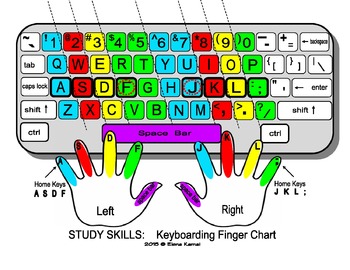

For many typists, high levels of typing performance are achieved through unconstrained sustained practice-or “experience” (Grabowski, 2008). Typing skills have become more widespread but also more variable (Feit et al., 2016) as there might be “more than one way to speed up a typist” (Behmer & Crump, 2016). Since the advent of personal computers and their progressive dissemination from the 1990s onwards, an ever-increasing population has regular access to keyboards. Cooper, 1983 Gentner, 1983a), with much of this research being based on chronometric measures of performance, such as number of words per minute (wpm), response times (RT, the time elapsing between a stimulus and the first keystroke), or inter-keystroke intervals (IKI, time elapsing between two keystrokes). This population of so-called touch-typists has received considerable attention in the scientific literature (e.g. These individuals acquired highly homogeneous skills through intense formal training, which consisted in learning strictly systematic finger-to-key mappings, dispensing from the need to look at their hands while typing, among other requirements.

From the invention of typewriters at the end of the nineteenth century to roughly the end of the 1980s, typewriting was almost exclusively performed by trained professionals. The acquisition of typing expertise has seen a radical change in the last two or three decades, going from the formal systematic training of a very limited population of professionals to a variable, often disorderly and unconstrained process carried out by a wide portion of the general population. The available database provides a useful benchmark for future experimental research on typing. The results show that using a keyboard frequently can, by itself, lead to the development of high expertise, and that the difference between the least and the most proficient typists is more quantitative than qualitative. The second focuses on identifying the underlying cognitive processes that might differ between the most and least proficient individuals. The first focuses on identifying the habits that are associated with proficient performance. Our preregistered study aimed at characterizing the more variable expertise currently prevalent in university students, by combining two complementary approaches to the study of expertise.
#COMPUTER KEYBOARD TYPING FINGERS PDF PROFESSIONAL#
Such intensive practice may lead to high levels of achievement, perhaps comparable with those that professional typists had before the advent of personal computers, despite the fact that contemporary typing often relies on informal learning and accommodates a greater range of typing habits. Many people, including university students, spend several hours a day typing. Typing has become a pervasive mode of language production worldwide, with keyboards fully integrated into many daily activities.


 0 kommentar(er)
0 kommentar(er)
